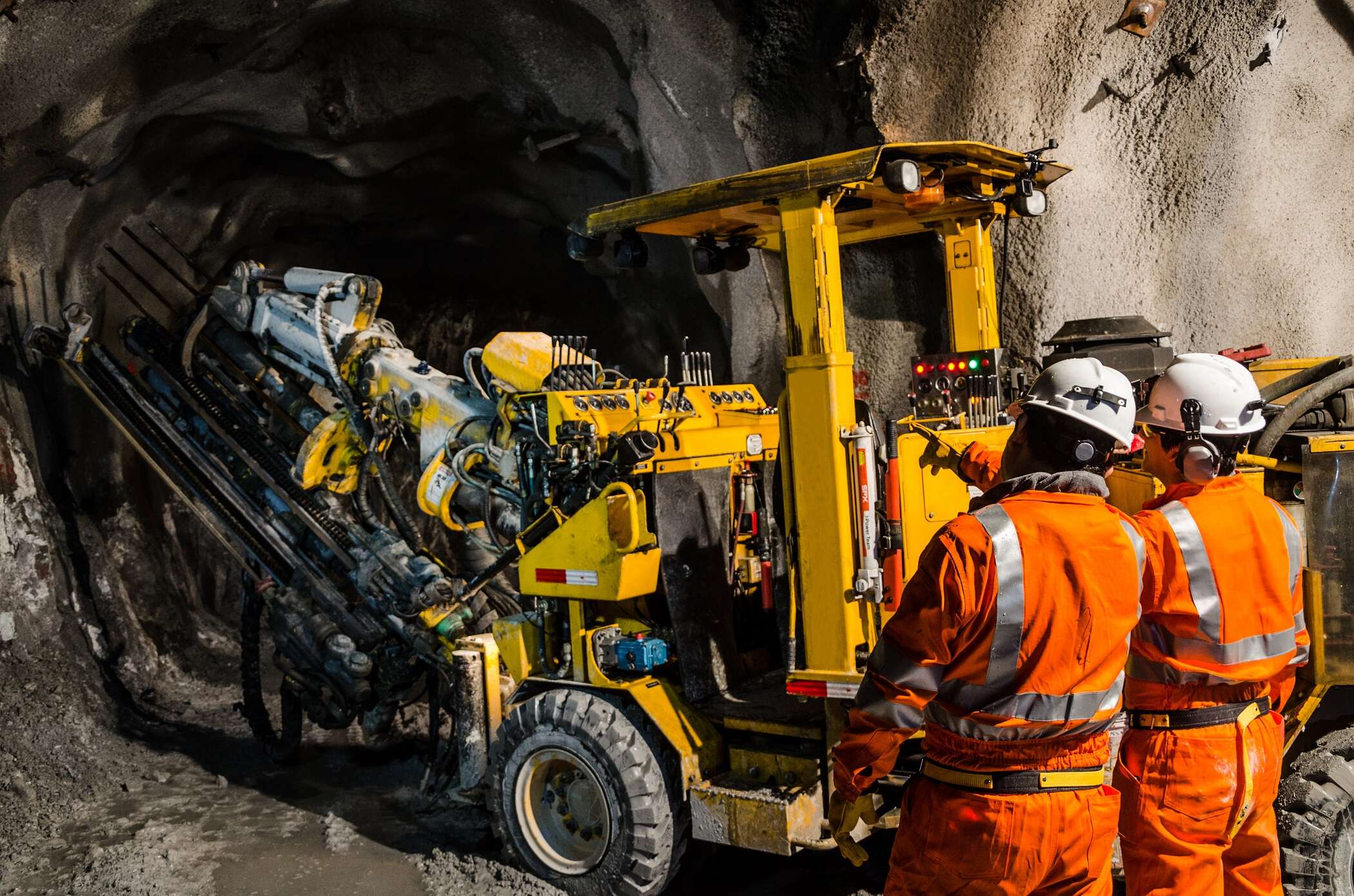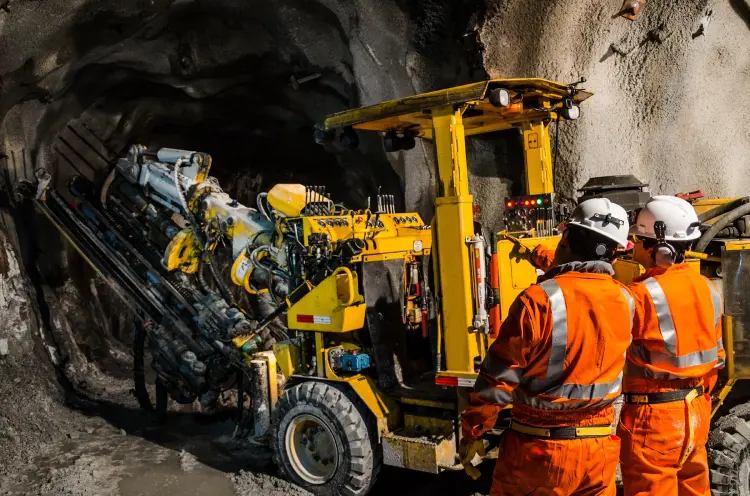
Mining is one of the world’s most dangerous occupations, with hundreds, perhaps thousands, of miners dying as a result of their work each year. A new research project has been launched to investigate the use of 5G in underground mining in order to create safer, more efficient mines. 5G could have a transformative impact on the sector, experts tell Tech Monitor, but the traditionally conservative industry must overcome a number of social and technical challenges if it is to fully embrace digitisation.

Next Gen mining, or NGMining as the project is known, is a collaboration between Nokia, Swedish mining company Sandvik and VTT, Finland’s technical research centre. Its core mission is to use 5G to “facilitate safe, and sustainable underground mining through productive use of autonomous and connected machinery,” a VTT statement said. NGMining aims to create a proof of concept system to allow communication underground and in harsh environments, based on a 5G network.
Though such systems promise to improve safety, their impact on the sector’s workforce may not be entirely positive, experts say.
5G and mining: the benefits
Thanks to the high bandwidth and low latency it offers, 5G can deliver services to mines that would previously have been unachievable, says Sean Keenan, global research lead for natural resources at Accenture. “With 5G, connectivity at mines has gone from providing simple internet access to powering complex infrastructure, equipment and the IoT,” he says. “It opens up a new level of machine learning, data analytics, fixed asset IoT and cloud computing that will result in greater automation and operational efficiencies.”
So far digitisation efforts in the industry have centred on increased automation. One of the most high-profile examples is Australian mining giant Rio Tinto’s fleet of 80 autonomous trucks, which transport materials around the company’s sites using a tracking system controlled by WiFi and GPS guidance technologies. But 5G can enable more complex operations to be automated too, says Vitor Correia, secretary general of the International Raw Materials Observatory, a non-profit organisation which works with companies in the mining sector.
“What we are seeing now with 5G is that because you have greater bandwidth you can go beyond transport and enlarge it to other aspects,” Correia says. “You can have high-quality cameras which don’t just give you visuals but also measure different bits of the light spectrum, which can help the operator select the materials they want to load. I see better loading as one of the areas that will be enabled by 5G, as well as exploration – we’re seeing autonomous drilling machines being developed by some companies that start drilling and take the cores out with minimal involvement from people.”
Mining remains a dangerous business. Figures from the International Council on Mining and Metals show that 287 occupational fatalities were recorded by its member companies in 2019, but the industry’s actual death toll is likely to be a lot higher, as many deaths go unrecorded or are attributed to other causes. Keeping more people out of dangerous situations is seen as a major benefit of automation.
Correia says safer mines protect the profits of mining companies, and this is driving the adoption of technologies like 5G. “Cost is the main issue,” he says. “If you take the example of South Africa, when there’s a deadly accident the mine involved is automatically closed for two-to-three weeks for a full investigation. This means you won’t be operating for two-to-three weeks, and that cost is a driver for ensuring accidents don’t happen.”
Accenture’s Keenan says 5G and associated automation can help reduce operator error, which is a big cause of mining accidents. “Truck driver fatigue has been a large contributor to safety incidents at mines,” he says. “And some parts of mines are simply too hazardous for people, such as pit walls and stopes. Automation can take on repetitive roles prone to human error or enable machines to access hazardous areas. 5G connectivity can also enhance predictive maintenance, thus avoiding the probability of equipment failure and accidents.”
The barriers to 5G adoption in mining: technical and cultural
The industry’s embrace of 5G is still at an early stage according to Ed Gubbins, principal analyst at GlobalData. “We’re seeing several proof-of-concept trials and demonstrations from major 5G vendors with actual mines,” he says. “But the deployments haven’t ramped up to large scale rollouts yet.”
This is due in part to technical issues caused by the remote and dangerous locations of many mines, which means setting up a cabled fibre connection to a 5G base station, the hub of private 5G networks, is problematic. “Access to fibre in remote operations is a key barrier,” Keenan says. Low-orbit satellite constellations providing 5G connectivity could be the answer. “[Satellites] will open up 5G to remote operations once latency becomes competitive,” Keenan argues. “The great thing about satellite providers is that the ‘pay to play’ cost could really come down for remote operations – connectivity can be rented and not installed, thus avoiding large upfront costs that can be a burden for smaller operations.”
Another technical barrier is getting a signal underground, something NGMining hopes to solve by examining how radio frequency signals behave in underground mines, and by developing network designs and hardware that are suited to underground conditions.
If your mine is being operated remotely using 5G and is invaded by a hacker, it could disrupt operations and see the value of the company drop quickly.
Vitor Correia, International Raw Materials Observatory
But cultural issues are also at play, according to Correia. “The mining industry is very conservative,” he says. “Unlike oil and gas, where you see a lot of leading-edge technologies, companies like Rio Tinto [which rely heavily on technology] remain the exception.” Many companies in the sector believe the risks of new technology outweigh the benefits, Correia adds. “These are big, often publicly quoted companies, and they don’t want to lose any stock market value,” he explains. “If your mine is being operated remotely using 5G and is invaded by a hacker, it could disrupt operations and see the value of the company drop quickly,” he says. “I believe this is the reason the industry is so conservative and prefers to wait for new technologies to be fully tested before using them.”
Keenan agrees with this analysis. “Some companies simply don’t like change, or view automation as an unnecessary operational risk in a profitable mining environment,” he says.
5G and the people dilemma
While 5G and associated technologies could help cut the number of mining-related fatalities each year, it is also likely to change the role of the miner, which could have a real impact on communities that rely on mining for employment, particularly those in developing countries. “By using 5G you’re potentially shifting the workforce,” says Correia. “That builds social pressure on the mines, because you’ll be creating jobs for people back home with college degrees, rather than for people in Africa or South America. People in these areas won’t have a job at the mine, unless they are a gatekeeper, because they don’t necessarily have the right skills. You can’t just grab a miner who normally operates a truck or an excavator and put him in a remote location with a joystick.”
This is a big problem for mining companies because it makes it more difficult to convince authorities to grant them a licence to operate. And even partial automation can meet with opposition from staff. “Some companies are operating in locations with large local workforces, often in communities with large unemployment rates,” Keenan says. “They fear automation as a replacement for human employment.”
One benefit of automation could be the emergence of a more diverse mining workforce, Keenan says. The industry is traditionally male-dominated, and often involves unsociable working hours and travel to remote locations. This has led to a labour shortage. “If we are to replace equipment with driverless or remote-operated equipment, the industry can expand the pool of workers available to it,” Keenan argues. “Parents with young kids, who are unable or unwilling to travel, could operate or co-ordinate machinery, and people with disabilities could have a far better opportunity to work in an automated mine than an unautomated one. With a severe skills shortage impacting parts of the mining industry at present, exacerbated by Covid-19-related travel restrictions, the financial incentive to diversify the workforce has never been greater.”
But despite this potential opposition, GlobalData’s Gubbins expects the roll-out of 5G across mining to accelerate in the coming years. “The vendors are doing a good job so far of making the case for 5G’s value in these scenarios, so I’d expect to see traction in this area going forward, especially as 5G RAN technology evolves to support more IoT-type functions,” he says.






